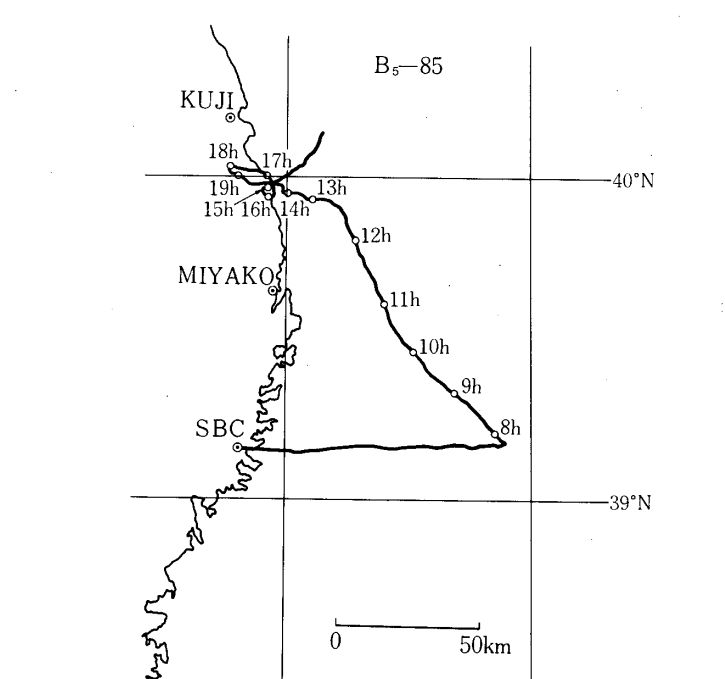Purpose of the flight and payload description
The objective of the flight was to make observations of the extinction of the solar radiation in the region of 427-451 nm in the stratosphere by using a balloon-borne spectrophotometer. The observations were carried out by the Geophysics Research Laboratory from the University of Tokyo.
At left can be seen a picture of the instrument (click to enlarge). The principal component of the spectrophotometer used was a Nikon P250 monochromator. It was a Czerny-Turner spectrometer with parabolic mirrors of 25 cm focal length mounted off axially. Its scanning device was modified to sweep the wavelength region between 427 and 451 nm back and forth at a rate of 1A/s. A Hoya B440 color glass filter was used as a pre-filter. The grating installed was a standard one with a blaze wavelength of 500 nm, 52*52mm ruled area and a ruling rate of 1,200 grooves/ mm. The slit width and height were set at 0.07 mm and 4mm respectively both for the entrance and exit.
The gondola on which the instrument was mounted was azimuthally controlled with reference to the solar direction. Nonetheless, the spectrometer was equipped with a solar tracker for vertical and horizontal direction. The spectrometer looked at the solar disk through a light baffle with a field of view of 2º in full angle. Since the objective was to observe the whole solar disk, a precision of 1º was enough for the solar tracker. Apparent variations of the solar influx to the spectrometer were monitored by a filter photometer, which consisted of a filter and a photo diode tube.
Details of the balloon flight

Balloon launched on: 5/29/1978 at 6:32 JST
Launch site: Sanriku Balloon Center, Iwate, Japan
Balloon launched by: Institute of Space and Astronautical Science (ISAS)
Balloon manufacturer/size/composition: Zero Pressure Balloon model B5 5.000 m3
Flight identification number: B5-85
End of flight (L for landing time, W for last contact, otherwise termination time): 5/29/1978 at 20:44 JST
Balloon flight duration (F: time at float only, otherwise total flight time in d:days / h:hours or m:minutes - ): 15 h
Landing site: In the Pacific Ocean east of Kuji city
The balloon was launched from the Sanriku Balloon Center at 6:32 JST on May 29, 1978. After a nominal ascent, the balloon arrived at an altitude of 24km over a point located 90 km east from the launching site. Between 14:00 and 20:00 JST the balloon remained at an altitude of 20km over the region 90 km north from the launching site.
The spectroscopic observation was performed between 08:03 and 19:10 JST with an interruption of about five hours due to the malfunction of the solar tracker because of balloon's shadow.
The mission was terminated at 20:44 JST and the payload landed in the Pacific Ocean east of Kuji city. Total flight time was about 15 hours.
External references
- Balloon Observation of the Stratospheric NO2 Profile by Visible Absorption Spectroscopy Journal of the Meteorological Society of Japan Vol. 59, No. 3, Pag. 410 (1981)
- Balloon Observation of the Vertical Profile of the Stratospheric NO_2 Departmental Bulletin Paper, 15 (2_B), 243-254, 1979-07 (In Japanese)
- Balloon Observations of Stratospheric Aerosol and Ozone [in Japanese] Bulletin of the Institute of Space and Aeronautical Science, University of Tokyo 14(4_B), 1195-1202, 1978-12
- Observational Implication for the Tropospheric NO2 Burden Journal of the Meteorological Society of Japan Vol. 59, No. 3, Pag. 430 (1981)
10855If you consider this website interesting or useful, you can help me to keep it up and running with a small donation to cover the operational costs. Just the equivalent of the price of a cup of coffee helps a lot.


